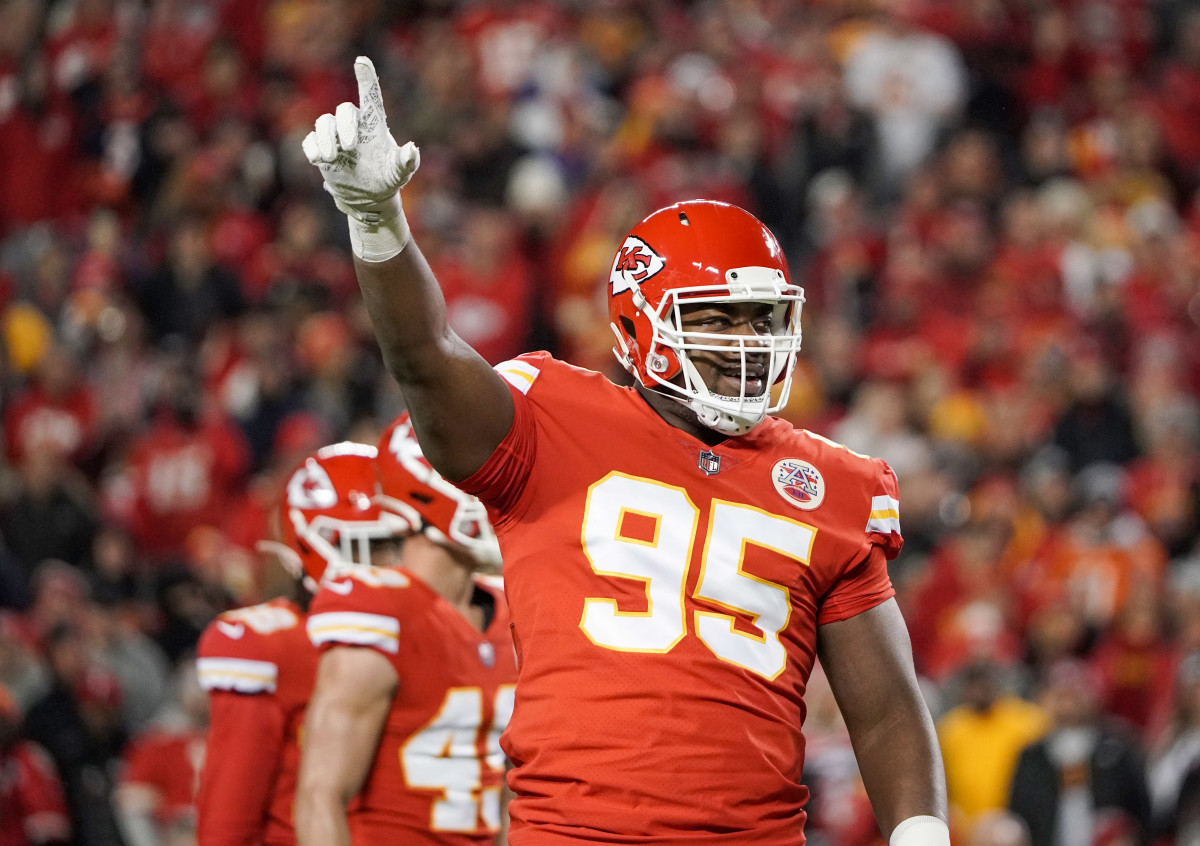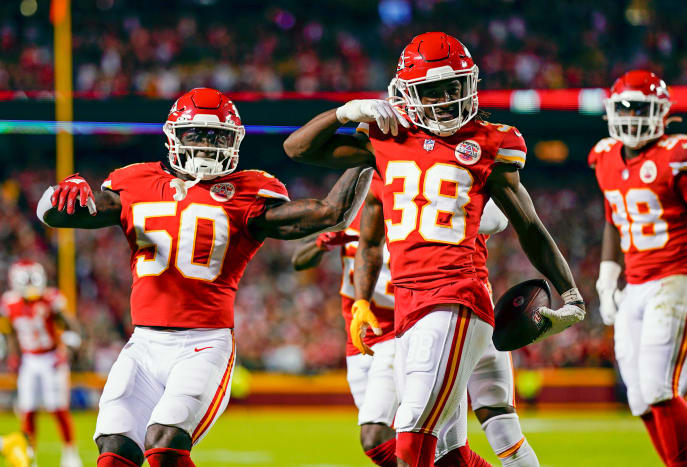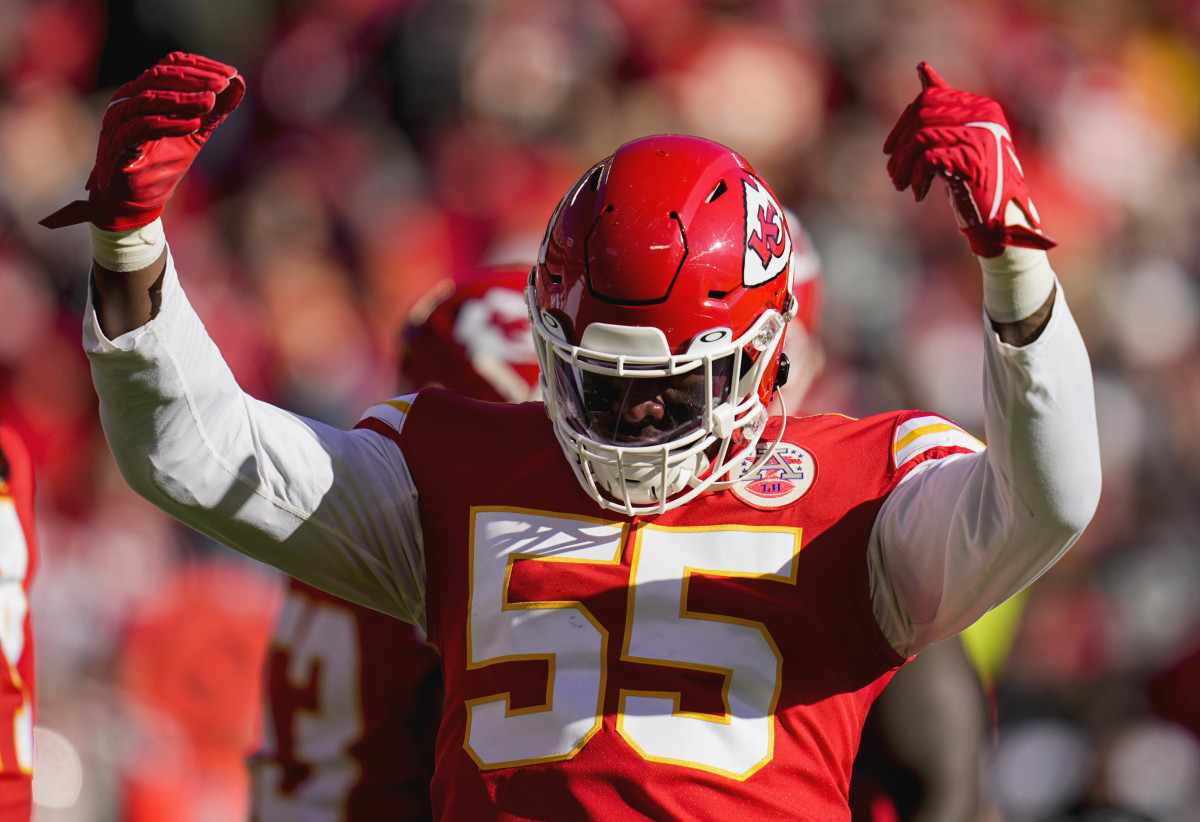Keys to Chiefs’ Defense Avoiding Early-Season Struggles Again
It’s easy to forget now, given that they came within a few plays of a Super Bowl LVI appearance. For the first five weeks of the 2021-22 season, the Kansas City Chiefs were fielding — by some measures — the least-productive defense in professional football history.
Under the backdrop of a must-win Monday Night Football matchup to kickstart November, circumstances began to change. With the snap of a finger (or Chris Jones’ wrist, whichever you prefer), the finally-healthy Chiefs rode that demonstrative defensive effort into becoming the first team since the 'Legion of Boom' Seahawks in 2014 to hold opponents to single-digit scoring four times over a five-game span.

Because the Chiefs’ defensive numbers were so turbulent throughout 2021-22, one must wonder if that was more of a flash in a pan or if Kansas City can capture that magic more consistently come September.
It certainly doesn't help that defensive coordinator Steve Spagnuolo is already anticipating growing pains to overcome. Realistically, that’s to be expected; the Chiefs are replacing a three-time All-Pro safety and a cornerback that earned $40.5 million on the open market. That goes without mentioning other losses and the club acquiring seven defensive players in the 2022 NFL Draft.
The hope is that some combination of those aforementioned seven and the free-agent acquisitions can abate those growing pains as quickly as possible. Excluding obvious factors such as health, here are three ways Spagnuolo's defense can avoid a slow start similar to the one that plagued everyone involved last season:
Make substitutions and adjustments more proactively

Hindsight remains the only undefeated across the NFL’s century-long history, and even it has to wonder how differently the Chiefs’ defensive start to last season could have been with a few lineup tweaks.
The two that immediately come to mind: Jones’ return to the three-technique alignment and allowing Juan Thornhill co-pilot at safety with Tyrann Mathieu as opposed to Daniel Sorensen. It’s difficult to pin everything on Sorensen, even with how uninspiring the numbers were. What isn’t difficult, though, is making a case that perhaps the moves to fix those numbers could have happened a bit earlier.
Around the time of Week 6 is where it gets interesting. Over those first five weeks, Thornhill’s snap counts went from 95% in Week 1, down to 14%, and then 29, 42 and 44 over a four-game, three-loss span. In Week 6, it returned to 100%, steadying above 80% for the season's remainder.
To Spagnuolo and the Chiefs’ credit, this was also around the time of Willie Gay Jr.’s return and Melvin Ingram’s arrival — moves that granted the Chiefs added sideline-to-sideline speed and aggressiveness. Hypothetically, this bodes well for the athleticism brought in this summer.
On the topic of Jones, it’s commendable that he had the Pro Bowl season he did after dropping 15-20 pounds to play along the edge, only to re-transition into one of the game’s most fearsome three-techs midway through. The snap-for-snap numbers spoke for themselves, however, highlighting a need for a mix between the two.
This isn’t to say you give up on an idea five or six weeks in. Given the six-game slate the Chiefs start this season with — six teams with winning records in 2021-22 — it’s wise to avoid repeating that guessing game as much as possible.
Don’t rely solely on third-down blitz brilliance

Admittedly, this one is no fun. Part of what makes this Chiefs’ defense and its coaching staff exciting comes from the ability to draw up third-down blitzes that keep opposing quarterbacks awake at night. This deceptive slot corner blitz that lets Ingram roam untouched against the Denver Broncos represents a good example. It’s a beautiful sight that deserves to be seen more often … just not as often as seeing them get those same stops on earlier downs.
Consider this from Sharp Football Stats’ success rates. The list of teams that allowed over a 50% success rate on both passes and runs on first and second downs: the Atlanta Falcons, Minnesota Vikings, Cincinnati Bengals, New York Giants and Kansas City. As evidenced by this year’s AFC Championship Game, it certainly couldn’t stand in the way of making the Super Bowl, but it’s how the Chiefs’ defense can, in some aspects, stay out of its own way.
Similar to almost everything else, the Chiefs’ defense had similar peaks and valleys. On third-and-short, it was one of the NFL’s stingiest over the second half of the season. Though, because of how troublesome the numbers were at the outset, Kansas City wasn't able to reap the benefits of its full picture.
2021-22 and 2022-23 could show some similarities, with the Chiefs being similar to the likes of the Packers and Ravens: two elite, clock-eating offenses that don’t have as many opportunities to allow third-down situations. In a perfect world, that leads to more punts. To use that as a piggyback:
Turn more pressures into sacks

Put most simply, the Chiefs were the NFL's sixth-best in pressures (178) and fifth-best in pressure rate (26.4%) last season. In overall sacks? Fourth-worst with just 31.
In looking over raw numbers from Spagnuolo’s three-season Chiefs tenure, it’s fascinating to note that at the turn of the second half of the season, there's both. Like a boxer feeling his opponent out with jabs, those haymakers begin to come with more regularity in November and beyond.
Writing a little bit about how the Chiefs’ defense can avoid a similar start to last year, and this caught my eye.
— Marlow Ferguson Jr. (@meloferg) June 15, 2022
Thinking it’s well-known that Steve Spagnuolo’s defenses heat up over the season’s second half, but putting some statistics together paints a pretty cool picture. pic.twitter.com/7QZ3w6sxWZ
The importance of pressures shouldn’t go understated. Converting, however, could be the difference between a second-and-8 becoming a third-and-8 or a second-and-8 becoming third-and-18. Unless the Chiefs are facing Ja’Marr Chase, you like those odds.
The Chiefs having more raw speed and ambition on the field could be the difference. Spagnuolo adding in a player of this caliber with 4.53 40-yard-dash time and the athleticism to finish plays will add to the occasion. Last year, Ben Niemann led the Chiefs in blitzes (per Pro Football Reference), with L’Jarius Sneed and Daniel Sorensen right behind at Nos. 2 and 3.
Regardless of whomever the Chiefs decide to have replacing them among that top three, the message to opposing quarters — ideally from the start — would be inherently clear: look out below.
